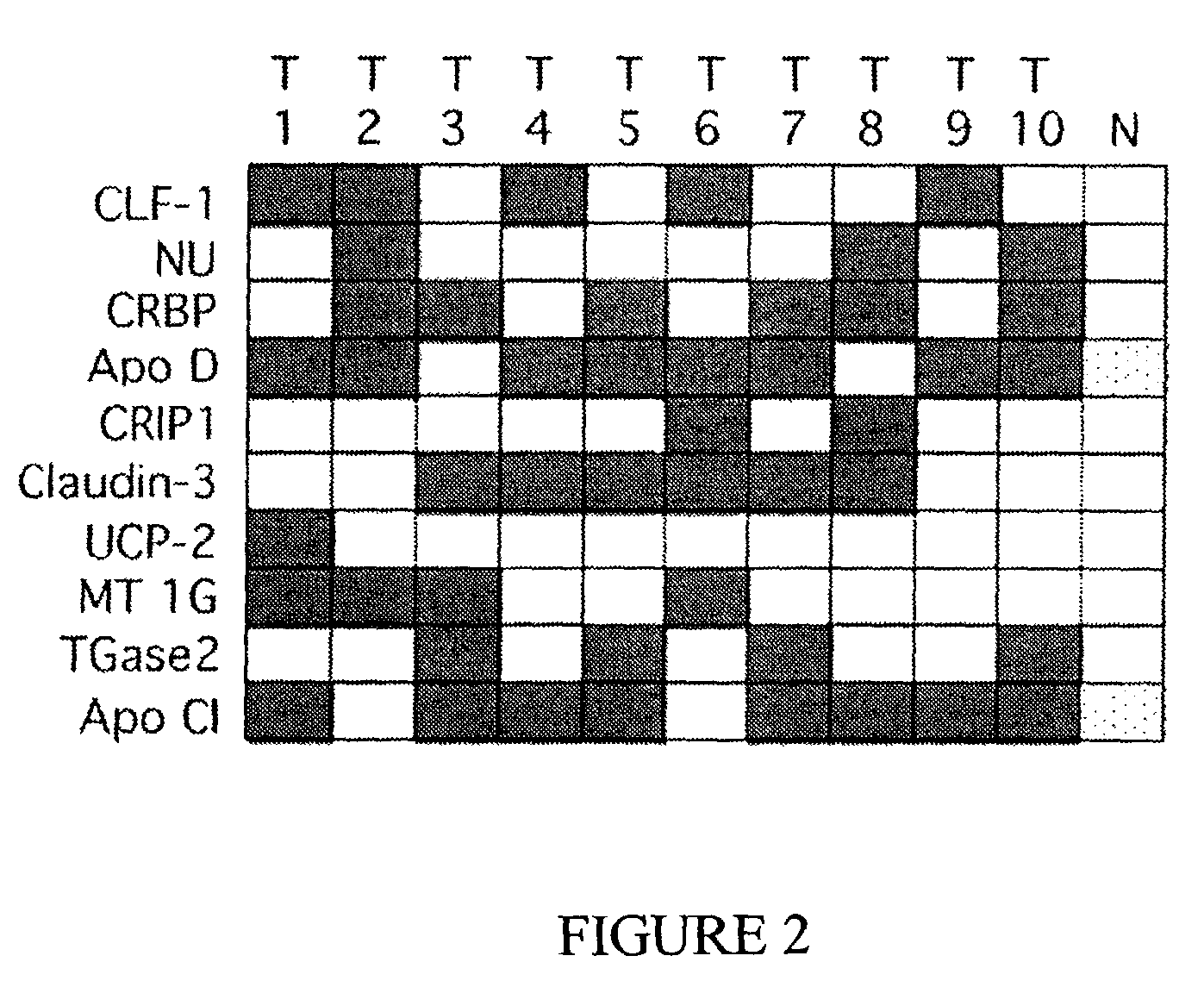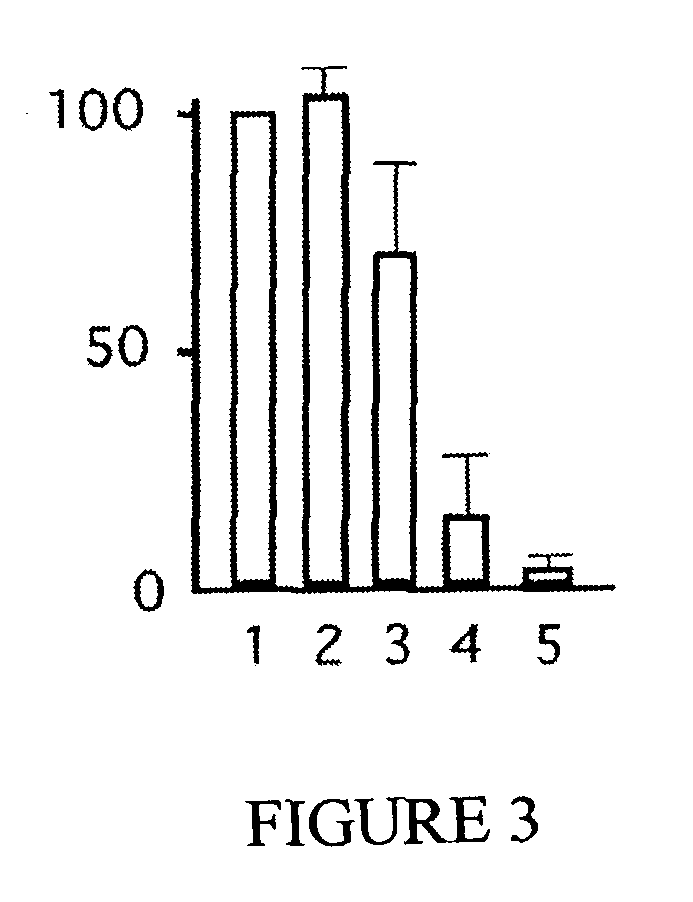Genomic screen for epigenetically silenced tumor suppressor genes
a tumor suppressor gene and gene technology, applied in the field of methods of detecting tumor suppressor genes, can solve the problems of patients not seeking medical assistance, and patients not having the ability to find markers for most cancers
- Summary
- Abstract
- Description
- Claims
- Application Information
AI Technical Summary
Benefits of technology
Problems solved by technology
Method used
Image
Examples
example 1
Identification of Epigenetic Silenced Tumor Suppressor Genes in Esophageal Cancer Cells
[0132]This example provides a genomic screening method for identifying epigenetically silenced genes, including epigenetically silenced tumor suppressor genes, associated with esophageal squamous cell carcinoma cells (see, also, Yamashita et al., Cancer Cell 2:485-495, 2002, which is incorporated herein by reference).
Methods
Cell Lines and Tissue Samples
[0133]Esophageal squamous cell carcinoma (ESCC) cell lines TE1, TE2, TE3, TE4, TE5, TE7, TE13, KYSE30, KYSE70, KYSE110, KYSE140, KYSE150, KYSE200, KYSE410 and KYSE520 were obtained from the Cell Response Center for Biomedical Research Institute of Department, Aging and Cancer, Tohoku University (TE series) and kindly provided by Dr. Shimada in the Department of Surgery, Kyoto University (KYSE series). Cells were grown in RPMI 1640 supplemented with 10% fetal bovine serum for isolation of DNA and RNA. Primary ESCC tumors and corresponding adjacent no...
example 2
Identification of Epigenetic Silenced Tumor Suppressor Genes in Head and Neck Cancer Cells
[0155]This example extends the results disclosed above for esophageal cancer cells to head and neck squamous cell carcinoma (HNSCC) cells.
[0156]HNSCC cells were incubated with 10 μM 5Aza-dC or with 0.1 μM 5Aza-dC and 300 nM TSA and screened as described in Example 1. Reactivation of epigenetically silenced genes was observed for both groups of treated cells. Exemplary genes showing at least a 2-fold increase in expression are shown in Tables 5 and 6 (fold increase shown in second column).
[0157]These results demonstrate that the genomic screening method disclosed in Example 1 can be extended to other cancer cell types. Further analysis of the re-expressed genes in HNSCC cells as disclosed in Example 1 can identify those genes having tumor suppressor activity.
[0158]Although the invention has been described with reference to the above example, it will be understood that modifications and variation...
PUM
| Property | Measurement | Unit |
|---|---|---|
| pH | aaaaa | aaaaa |
| PSA | aaaaa | aaaaa |
| electrophoresis | aaaaa | aaaaa |
Abstract
Description
Claims
Application Information
 Login to View More
Login to View More - R&D
- Intellectual Property
- Life Sciences
- Materials
- Tech Scout
- Unparalleled Data Quality
- Higher Quality Content
- 60% Fewer Hallucinations
Browse by: Latest US Patents, China's latest patents, Technical Efficacy Thesaurus, Application Domain, Technology Topic, Popular Technical Reports.
© 2025 PatSnap. All rights reserved.Legal|Privacy policy|Modern Slavery Act Transparency Statement|Sitemap|About US| Contact US: help@patsnap.com



